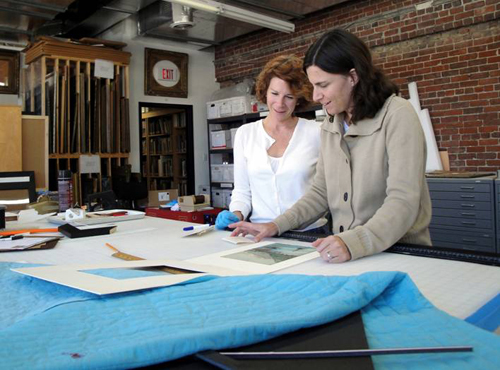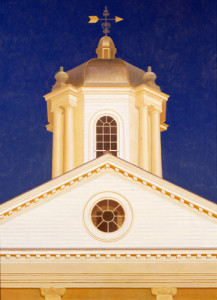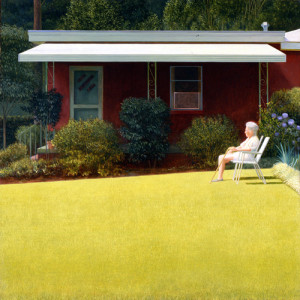Many museums organize the artwork in their galleries according to “permanent collection” and “special exhibition” themes. The permanent collection galleries display works of art that belong to the museum, while special exhibitions often include art on loan from another institution or private collectors. The Gibbes Museum regularly receives requests from museums across the country to borrow artwork for special exhibitions. Museums constantly lend works back and forth and are involved in an on-going cooperative dialogue about sharing art to enhance an exhibition or highlight a period of regional, national, or global art history. While the outgoing loan process follows a standard protocol, each instance is full of negotiation and nuance.
Most loan requests begin with a conversation between two curators to discuss an exhibition being organized and to inquire about borrowing works. The borrowing curator will provide exhibition details including themes, a check list of confirmed works, exhibition dates, information about scholarly research and publication initiatives, and any possibility of the exhibition traveling to multiple venues. Informal correspondence between curators is followed by a letter from the borrower to the Gibbes Executive Director, formally requesting the loan. In order to process a request, the Gibbes Museum asks that loan requests are submitted no later than three months before the date the artwork is needed—larger museums often require six months to one year lead time! Last minute requests are discouraged due to the amount of preparatory work required of collections and curatorial staff.

Once the formal application has been received, a series of internal questions must be addressed. Our collections and curatorial staff must determine if the object is needed for upcoming exhibitions at the Gibbes, if its condition is stable enough for travel, and if the borrowing institution’s facility meets standard requirements of security and climate control as defined by the American Association of Museums. These are just a few items on the lengthy checklist we use when considering outgoing loans. If the request passes the staff vetting process, it is brought before the Gibbes Museum Collections Committee for final approval.
The Collections Committee, a sub-Committee of the Carolina Art Association Board of Directors, meets quarterly with the Executive Director, Curator of Collections, and Director of Collections Administration to monitor the direction of the permanent collection and must review all outgoing loan requests. If the loan is approved by the Collections Committee, the borrowing institution is given the good news and work continues with the often complicated details of conservation, packing, and shipping. Each museum has specific requirements that must be accepted by the borrower for the loan to move forward. For example, the Gibbes maintains a document that outlines standard requirements for all outgoing loans. This document is provided to the borrowing museum as soon as a request is received and covers all matters of shipping, couriers, photography, insurance, and installation. The costs to conserve, pack, and ship outgoing loans can be enormous and is outlined in the agreement. Negotiation regarding lender requirements can be challenging for both parties, but in the end, safety and integrity of artwork always prevails.
Currently the Gibbes has works on loan to several regional institutions. The work, Mama You Know I Never Paid Matisse No Never Mind, 2000, by Sigmund Abeles (American, b. 1934) can be found at the Columbia Museum of Art in the exhibition It Figures: The Work of Sigmund Abeles, until October 23, 2011.
Slightly farther west you will find two works by Edward Rice (American, b. 1953), The Exchange, 2011 and 502 Lucerne, 1983–1986, at the Morris Museum of Art in Augusta, Georgia. These paintings are prominently featured in the exhibition, Preservation of Place: the Art of Edward Rice, on view through November 20, 2011. Travel north a few hours to see the beautiful work titled Charleston Runner, 1996, by local artist Mary Edna Fraser (American, b. 1952). This batik is on view at the North Carolina Museum of Natural Sciences through November 6, 2011, in the compelling exhibition Our Expanding Oceans, a study of the science behind sea level rise.
The outgoing loan process for these exhibitions began back in 2010! As I write this, there are several new outgoing loan requests under consideration. Stay tuned to find out where works from the Gibbes collection might travel next.
—Zinnia Willits, Director of Collections Administration, Gibbes Museum of Art
Published September 9, 2011





